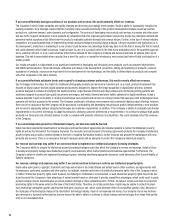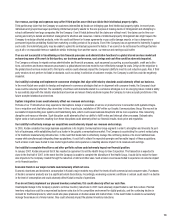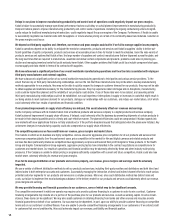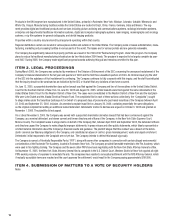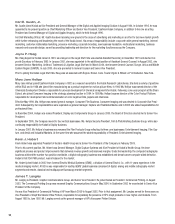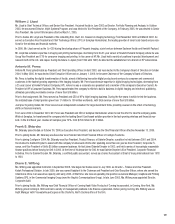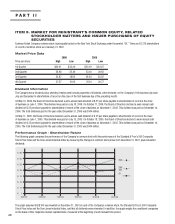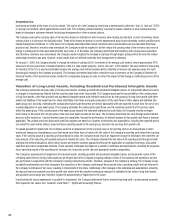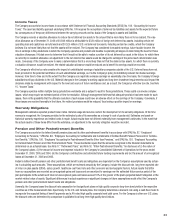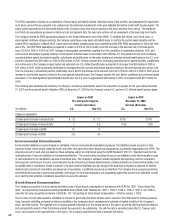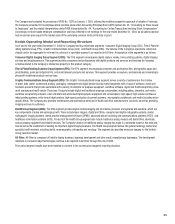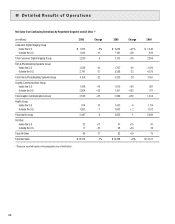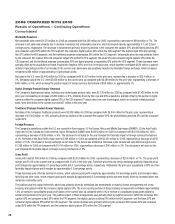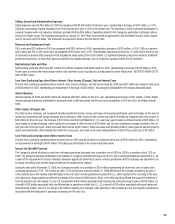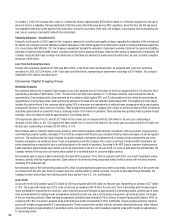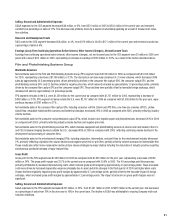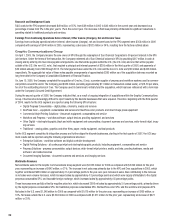Kodak 2006 Annual Report Download - page 29
Download and view the complete annual report
Please find page 29 of the 2006 Kodak annual report below. You can navigate through the pages in the report by either clicking on the pages listed below, or by using the keyword search tool below to find specific information within the annual report.
Inventories
Inventories are stated at the lower of cost or market. The cost of all of the Company’s inventories is determined by either the “first -in, first-out” (FIFO)
or average cost method, which approximates current cost. The Company provides inventory reserves for excess, obsolete or slow-moving inventory
based on changes in customer demand, technology developments or other economic factors.
The Company reduces the carrying value of its inventory based on estimates of what is excess, slow-moving and obsolete, as well as inventory whose
carrying value is in excess of net realizable value. These write-downs are based on current assessments about future demands, market conditions and
related management initiatives. If, in the future, the Company determined that market conditions and actual demands are less favorable than those
projected and, therefore, inventory was overvalued, the Company would be required to further reduce the carrying value of the inventory and record a
charge to earnings at the time such determination was made. If, in the future, the Company determined that inventory write-downs were overstated
and, therefore, inventory was undervalued, the Company would recognize the increase to earnings through higher gross profit at the time the related
undervalued inventory was sold. However, actual results have not differed materially from management’s estimates.
On January 1, 2006, the Company elected to change its method of costing its U.S. inventories to the average cost method, which approximates FIFO,
whereas in all prior years most of Kodak’s inventory in the U.S. was costed using the “last-in, first-out” (LIFO) method. The new method of accounting
for inventory in the U.S. is deemed preferable because the average cost method provides better matching of revenue and expenses given the rapid
technological change in the Company’s products. The average cost method also better reflects the cost of inventory on the Company’s Statement of
Financial Position. Prior periods have been restated for comparative purposes in order to reflect the impact of this change in methodology from LIFO to
average cost.
Valuation of Long-Lived Assets, Including Goodwill and Purchased Intangible Assets
The Company reviews the carrying value of its long-lived assets, including goodwill and purchased intangible assets, for impairment whenever events
or changes in circumstances indicate that the carrying value may not be recoverable. The Company assesses the recoverability of the carrying value
of long-lived assets, other than goodwill and purchased intangible assets with indefinite useful lives, by first grouping its long-lived assets with other
assets and liabilities at the lowest level for which identifiable cash flows are largely independent of the cash flows of other assets and liabilities (the
asset group) and, secondly, estimating the undiscounted future cash flows that are directly associated with and expected to arise from the use of and
eventual disposition of such asset group. The Company estimates the undiscounted cash flows over the remaining useful life of the primary asset
within the asset group. If the carrying value of the asset group exceeds the estimated undiscounted cash flows, the Company records an impair-
ment charge to the extent the carrying value of the long-lived asset exceeds its fair value. The Company determines fair value through quoted market
prices in active markets or, if quoted market prices are unavailable, through the performance of internal analyses of discounted cash flows or external
appraisals. The undiscounted and discounted cash flow analyses are based on a number of estimates and assumptions, including the expected period
over which the asset will be utilized, projected future operating results of the asset group, discount rate and long-term growth rate.
To assess goodwill for impairment, the Company performs an assessment of the carrying value of its reporting units on an annual basis or when
events and changes in circumstances occur that would more likely than not reduce the fair value of the Company’s reporting units below their carrying
value. If the carrying value of a reporting unit exceeds its fair value, the Company would record an impairment charge to earnings to the extent the car-
rying amount of the reporting unit goodwill exceeds its implied fair value. The Company estimates the fair value of its reporting units through internal
analyses and external valuations, which utilize income and market valuation approaches through the application of capitalized earnings, discounted
cash flow and market comparable methods. These valuation techniques are based on a number of estimates and assumptions, including the projected
future operating results of the reporting unit, discount rate, long-term growth rate and appropriate market comparables.
The Company’s assessments of impairment of long-lived assets, including goodwill and purchased intangible assets, and its periodic review of the
remaining useful lives of its long-lived assets are an integral part of the Company’s ongoing strategic review of the business and operations, and are
also performed in conjunction with the Company’s ongoing restructuring actions. Therefore, changes in the Company’s strategy, the Company’s ongo-
ing digital transformation and other changes in the operations of the Company could impact the projected future operating results that are inherent in
the Company’s estimates of fair value, resulting in impairments in the future. Additionally, other changes in the estimates and assumptions, including
the discount rate and expected long-term growth rate, which drive the valuation techniques employed to estimate the fair value of long-lived assets
and goodwill could change and, therefore, impact the assessments of impairment in the future.
In performing the annual assessment of goodwill for impairment, the Company determined that no material reporting units’ carrying values exceeded
their respective fair values. See “Goodwill” under Note 1, “Significant Accounting Policies.”


